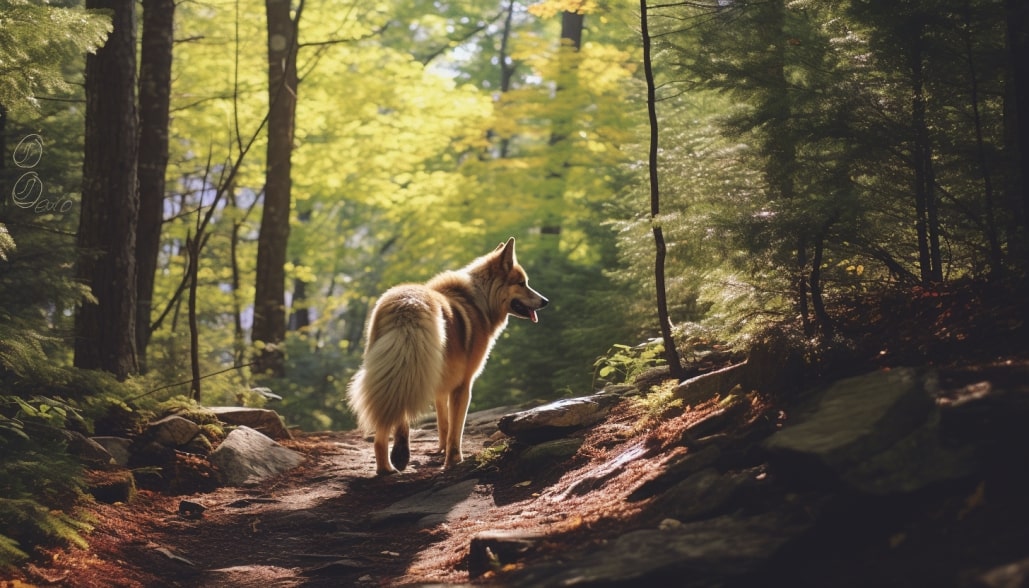
Checklist for a Successful Pet-friendly Hike in Vancouver
Welcome to your comprehensive guide to pet-friendly hiking in Vancouver! If you’re a dog owner and an outdoor enthusiast, you know that combining these two loves can be a rewarding experience. However, it requires careful planning and consideration. This guide will walk you through everything you need to know to ensure a safe and enjoyable hike for both you and your furry friend. From understanding Vancouver’s pet-friendly trails to preparing for your hike, and even post-hike care, we’ve got you covered. So, leash up and let’s hit the trails!
Understanding Vancouver’s Pet-Friendly Trails
Vancouver is a city blessed with natural beauty, and its trails are no exception. But not all trails are created equal, especially when it comes to bringing along your four-legged friend. It’s crucial to choose a trail that not only allows dogs but is also safe and enjoyable for them.
The Importance of Choosing Dog-Friendly Trails
When planning your hike, the first step is to research and choose a trail that is dog-friendly. Some trails may have restrictions on pets due to wildlife, environmental concerns, or other reasons. Hiking on a trail that isn’t dog-friendly can lead to fines, and more importantly, it can put your pet and local wildlife at risk.
Dog-friendly trails, on the other hand, are designed with pets in mind. They often have features like waste stations, off-leash areas, and even dog-friendly water sources. Plus, these trails are used by other dog owners, so your pup might make a few friends along the way!
Top Dog-Friendly Trails in Vancouver
Vancouver boasts several dog-friendly trails that offer a variety of landscapes and difficulty levels. Here are a few popular ones:
- Capilano Pacific Trail: This trail offers a moderate hike with beautiful views of the Capilano River. Dogs are allowed on leash, and there are several spots where they can cool off in the river.
- Baden Powell Trail: This long-distance trail spans from West Vancouver to Deep Cove. It’s a challenging hike, but it offers a variety of landscapes from dense forests to stunning overlooks. Dogs are allowed on leash.
- Cypress Falls hike: This is a shorter, easier hike that’s perfect for families and older dogs. The trail follows Cypress Creek, leading to two beautiful waterfalls. Dogs are allowed on leash.
Remember, each trail has its own rules and regulations, so it’s important to check the specific guidelines before you go. And always respect the trail and other hikers by keeping your dog under control and cleaning up after them.
Preparing for Your Hike
Once you’ve chosen your trail, it’s time to prepare for your hike. This includes checking the weather, packing enough water and snacks, and bringing essential items like a leash and waste bags.
Checking the Weather
Before you head out, check the weather forecast. Vancouver’s weather can be unpredictable, and conditions in the mountains can change rapidly. Avoid hiking in extreme weather conditions such as heavy rain, snow, or high temperatures, which can be dangerous for both you and your pet.
If the forecast calls for mild weather, remember that conditions can still vary on the trail. Higher elevations can be cooler and windier, so bring layers and consider a dog jacket for your pet if they have short fur or get cold easily.
Hydration is Key
Hydration is crucial for a safe hike. Dogs can get dehydrated quickly, especially on long hikes or warm days. A good rule of thumb is to bring at least one litre of water per hour of hiking for each person, and an additional litre for your dog.
Remember to offer your dog water frequently during the hike. Don’t wait for them to get thirsty, as dogs can’t sweat and can overheat easily. Consider bringing a collapsible dog bowl for your pet to drink from.
Packing the Right Snacks
Just like humans, dogs need fuel during a hike. Bring high-energy snacks for both you and your pet. For humans, trail mix, protein bars, and fresh fruits are great options. For dogs, consider dog-friendly energy bars, dog biscuits, or even some plain cooked chicken or turkey.
Remember to feed your dog a small meal before the hike, but avoid feeding them a large meal to prevent bloat. Give them snacks during the hike and a good meal afterwards to replenish their energy.
The Essential Leash
Even if the trail allows off-leash dogs, it’s important to bring a leash. Unexpected situations can arise, like encounters with wildlife or other dogs, and it’s important to have control over your pet. A retractable leash can give your dog some freedom while allowing you to keep them close when needed.
Don’t Forget the Waste Bags
Last but not least, bring waste bags to clean up after your pet. It’s not only courteous to other hikers, but it’s also the law in many places. Plus, leaving pet waste can harm the environment and attract wildlife. Consider bringing an extra bag to carry the waste until you can dispose of it properly.
By following these steps, you can ensure a safe and enjoyable hike for both you and your furry friend.
Key Takeaways:
- Preparing for a hike involves checking the weather conditions, packing sufficient water and snacks, and bringing essential items such as a leash and waste bags, with the understanding that weather can be unpredictable and conditions can vary along the trail.
- Hydration is crucial for a safe hike, with a guideline of at least one litre of water per hour of hiking for each person and an additional litre for your dog, and it’s important to offer your dog water frequently and pack high-energy snacks for both you and your pet.
- Even if the trail permits off-leash dogs, carrying a leash is essential for unexpected encounters with wildlife or other dogs, and bringing waste bags is not only courteous to other hikers but also a legal requirement in many places, helping to protect the environment and prevent attracting wildlife.
During the Hike
Now that you’re prepared and on the trail, it’s time to make the most of your hike. This section will cover how to manage your pet during the hike, including when to keep them on a leash, how often to take breaks, and how to ensure they’re enjoying the hike as much as you are.
Keeping Your Pet on a Leash
Even on off-leash trails, there may be times when it’s necessary to leash your pet. This could be due to high-traffic areas, wildlife sightings, or steep and dangerous sections of the trail. Always have your leash handy and be ready to use it when needed.
Remember, just because your dog is friendly doesn’t mean all dogs (or people) you encounter will be. Always ask before allowing your dog to approach others, and leash them if you see another leashed dog approaching.
Snack and Hydration Breaks
Just like humans, dogs need regular breaks during a hike. A good rule of thumb is to take a short break every hour, or more frequently if it’s a hot day or if your dog is panting heavily. Use these breaks to offer your dog water and snacks, and to check them for any signs of discomfort or injury.
Remember, dogs can’t sweat like humans do, so they can overheat easily. If your dog is panting excessively, drooling, or seems lethargic, they may be overheating. In this case, find a shady spot, give them water, and rest until they cool down.
Key Takeaways:
- During the hike, managing your pet involves knowing when to keep them on a leash, such as in high-traffic areas, wildlife sightings, or steep sections of the trail, and understanding that not all dogs or people encountered will be friendly, so always ask before allowing your dog to approach others.
- Regular breaks are essential for dogs during a hike, with a guideline of taking a short break every hour, or more frequently in hot weather or if your dog is panting heavily, using these breaks to offer water and snacks and to check for signs of discomfort or injury.
- Dogs can overheat easily as they can’t sweat like humans, so if your dog is panting excessively, drooling, or seems lethargic, it’s important to find a shady spot, give them water, and rest until they cool down.
Post-Hike Care
After a successful hike, there are a few things you should do to ensure your pet recovers well and is ready for the next adventure.
Checking for Ticks
Ticks are a common parasite found in wooded and grassy areas, and they can transmit diseases to both pets and humans. After your hike, check your pet thoroughly for ticks, paying special attention to areas like the ears, neck, and underbelly.
If you find a tick, use a tick remover or tweezers to remove it, making sure to get the entire tick out. Monitor the bite area for any signs of infection, and consider having your pet tested for tick-borne diseases if they were bitten.
Post-Hike Hydration and Rest
Just like humans, dogs need to rehydrate and rest after a hike. Offer your dog plenty of water and a good meal to replenish their energy. Then, let them rest. Don’t be surprised if your dog is more tired than usual after a hike – it’s a lot of exercise!
Remember, hiking is a strenuous activity, and it’s important to gradually build up your pet’s endurance. Start with shorter, easier hikes and gradually increase the difficulty as your pet gets fitter.
Making Every Hike a Success
Hiking with your pet can be a rewarding experience, but it’s important to be prepared and to always prioritize your pet’s safety and comfort. By choosing a dog-friendly trail, preparing properly, managing your pet during the hike, and taking care of them afterwards, you can ensure a successful hike every time.
Learning from Each Hike
Every hike is a learning experience. Maybe you discovered that your pet needs more water than you thought, or that they’re scared of bridges. Use these lessons to better prepare for your next hike and to make each hike more enjoyable than the last.
Exploring New Trails
One of the joys of hiking is exploring new trails. Vancouver has a wealth of dog-friendly trails, so don’t be afraid to try something new. Just remember to research the trail beforehand and to always respect the trail rules and other hikers.
Key Takeaways:
- Post-hike care for your pet involves checking thoroughly for ticks, especially in areas like the ears, neck, and underbelly, and if a tick is found, it should be removed completely and the bite area monitored for signs of infection.
- Dogs need to rehydrate and rest after a hike, so offering plenty of water and a good meal to replenish their energy is essential, and it’s important to gradually build up your pet’s endurance for hiking by starting with shorter, easier hikes.
- Every hike is a learning experience that can help better prepare for future hikes, and exploring new trails can be a joy, but it’s crucial to research the trail beforehand, respect trail rules, and always prioritize your pet’s safety and comfort.


Paw-sitive Vibes Only: Ensuring a Fun and Safe Hike
Hiking with your pet is about more than just exercise; it’s about bonding, exploring, and creating memories. By following the guidelines in this guide, you can ensure that every hike is a paw-sitive experience for both you and your furry friend.
Remember, the key to a successful hike is preparation. Choose a dog-friendly trail, check the weather, pack enough water and snacks, and bring essential items like a leash and waste bags. During the hike, keep your pet on a leash when necessary, take regular breaks, and always be mindful of your pet’s comfort and safety. After the hike, check for ticks, rehydrate, and rest. And most importantly, learn from each hike and look forward to the next one!
Frequently Asked Questions
What should I do if my pet gets injured during the hike? If your pet gets injured, try to keep them calm and still to prevent further injury. If possible, carry them out of the trail. Seek veterinary care as soon as possible.
Are there any pet-friendly hiking groups in Vancouver I can join? Yes, there are several pet-friendly hiking groups in Vancouver. Check out local meetup groups or Facebook groups for pet-friendly hiking enthusiasts.
What other precautions should I take when hiking with my pet? In addition to the precautions mentioned in this guide, it’s a good idea to have your pet microchipped and to ensure they’re wearing a collar with contact information. This can help reunite you with your pet if they get lost.
How can I train my pet for longer hikes? Start with shorter hikes and gradually increase the distance and difficulty as your pet gets fitter. Also, consider basic obedience training to ensure your pet can follow commands, especially in off-leash areas.
What should I do if my pet shows signs of distress or discomfort during the hike? If your pet shows signs of distress or discomfort, stop, offer them water, and let them rest. If they don’t improve, it’s best to end the hike and seek veterinary care if necessary.
Sources
This guide was created using information from the following sources:
- Richards, Megan. “Best Dog-Friendly Hikes near Vancouver.” The Dog People CA, 8 July 2019, www.rover.com/ca/blog/best-dog-friendly-hikes-near-vancouver/. Accessed 4 Aug. 2023.
- W, Karl. “MOUNT THOM: A Chilliwack Hike with Great Views of the Fraser Valley!” Outdoor Vancouver, 22 Mar. 2020, www.outdoorvancouver.ca/dog-friendly-hikes-vancouver/. Accessed 4 Aug. 2023.
- Curiocity. “8 Dog-Friendly Hikes to Check out in & around Vancouver This Summer.” Curiocity, Curiocity, 10 Apr. 2023, curiocity.com/best-dog-friendly-hikes-near-vancouver/. Accessed 4 Aug. 2023.
- Eyton, Taryn. “8 Dog-Friendly Hikes around Vancouver.” Inside Vancouver, 30 Aug. 2021, www.insidevancouver.ca/2021/08/30/8-dog-friendly-hikes-around-vancouver/. Accessed 4 Aug. 2023.
- “Best Dog Friendly Hikes near Vancouver.” Kafka’s Organic, 22 July 2022, kafkasorganic.com/blogs/news/best-dog-friendly-hikes-near-vancouver. Accessed 4 Aug. 2023.
- Bored in Vancouver. “Dog-Friendly Off-Leash Hikes in Vancouver – Bored in Vancouver.” Bored in Vancouver, 3 Mar. 2020, boredinvancouver.com/dog-friendly-off-leash-hikes-in-vancouver/. Accessed 4 Aug. 2023.


